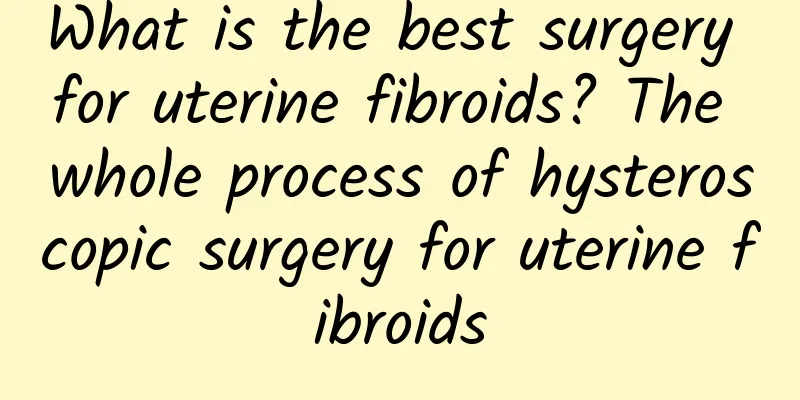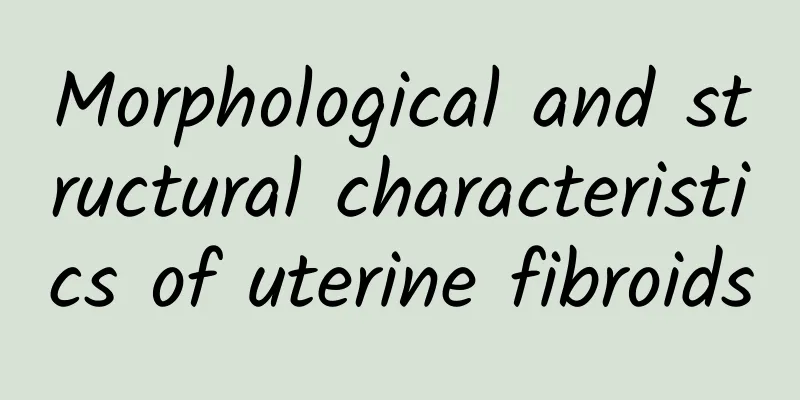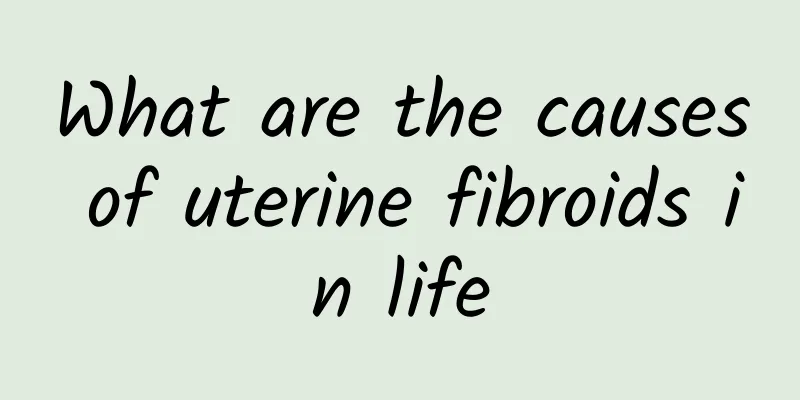What is the best surgery for uterine fibroids? The whole process of hysteroscopic surgery for uterine fibroids

|
What surgery is best for uterine fibroids? Uterine fibroids are a common benign tumor in women. Once detected, they often require surgical treatment. So, what is the best surgery for uterine fibroids? At present, hysteroscopic surgery is a more recommended option. The following will introduce the whole process of hysteroscopic surgery in detail. 1. Preoperative preparation Before hysteroscopic surgery, a series of preoperative preparations are required. First, the doctor needs to conduct a comprehensive assessment of the condition to ensure the feasibility of the surgery. Secondly, some examinations, such as B-ultrasound and pathological examination, are required to determine the nature and size of the fibroids. Finally, the patient needs to stop menstruating in advance so that the surgery can proceed smoothly. 2. Surgical Procedure Hysteroscopic surgery is a minimally invasive surgery that uses a laparoscope to introduce instruments into the uterus and directly act on the fibroids. The surgery is generally divided into the following steps: 1. Anesthesia: Before the operation begins, the patient will receive anesthesia, usually general anesthesia or spinal anesthesia. 2. Introduction of instruments: After anesthesia, the doctor will introduce the hysteroscope and other surgical instruments through the abdominal puncture point. 3. Observe the uterine cavity: The doctor will use hysteroscopy to observe the situation inside the uterus and determine the location and size of the fibroids. 4. Resection of fibroids: Using a knife introduced through the hysteroscope, the doctor removes or cuts open the fibroids to shrink or eliminate them. 5. Coagulation and hemostasis: After the operation, the doctor will use specific instruments to coagulate and stop bleeding to avoid postoperative bleeding. 6. End of the operation: After the operation, the doctor will remove the surgical instruments, treat the wound, and suture the wound. 3. Postoperative Care After surgery, patients need to do some necessary postoperative care to promote recovery and reduce the risk of complications: 1. Control bleeding: After the operation, the patient may have mild bleeding, which requires careful observation. At the same time, avoid strenuous exercise and excessive fatigue to control bleeding. 2. Restrained rest: For a period of time after surgery, the patient needs to rest properly and avoid excessive fatigue to help the wound heal faster. 3. Standardized diet: The diet after surgery needs to be standardized. Eat more easily digestible foods and avoid irritating foods to reduce the burden on the gastrointestinal tract. In summary, hysteroscopic surgery is currently a recommended treatment for uterine fibroids. Through hysteroscopic surgery, the situation inside the uterus can be accurately observed, and the fibroids can be removed or cut in a targeted manner. The postoperative recovery is fast and the trauma is small. Of course, whether the surgery is suitable depends on the specific situation of the patient. Before the operation, it is recommended that the patient fully communicate with the doctor to understand the specific risks and effects of the operation and make a more informed choice. |
>>: What causes uterine fibroids? What should an unmarried girl do if she has uterine fibroids?
Recommend
Which method is better for treating white lesions of the vulva?
Vulvar leukoplakia is already very familiar to mo...
Eating fish heads can prevent aging and improve skin health! The heat mine is hidden here...
During the Spring Festival, families reunite and ...
What should I do if my first menstrual period after ectopic pregnancy surgery is very light?
What should I do if the first menstrual flow afte...
Can I get pregnant with adenomyosis?
Patients with adenomyosis can become pregnant, an...
After the Mid-Autumn Festival, 60% of people develop mooncake face and their weight increases
After the Mid-Autumn Festival, some people eat to...
What should you pay attention to when you have bacterial vaginosis?
Bacterial vaginitis is a syndrome of increased se...
Paper cup calculation method for losing weight? Learn 4 ways to lose weight from Korean stars
South Korea is the country in the world where wom...
Experts teach you how to identify cervical erosion
When it comes to cervical erosion, many female fr...
What are the early symptoms of ectopic pregnancy?
What are the early symptoms of ectopic pregnancy?...
Childhood obesity is related to mothers' "lack of this one action"! Nutritionist Cheng Hanyu teaches how to serve food in 30 minutes
Childhood obesity is closely related to diet, esp...
What are the symptoms of abnormal leucorrhea? Do you know the harm of abnormal leucorrhea?
Leucorrhea is a secretion from the female vagina....
Irregular menstruation is always delayed. What medicine should I take to regulate it?
Many female friends take medicine to regulate whe...
How to treat cervical hypertrophy
Cervical hypertrophy is caused by long-term stimu...
How to treat uterine fibroids better? Here are some common surgical methods for uterine fibroids.
Surgery is effective in treating uterine fibroids...
How to regulate irregular menstruation, amenorrhea and sexual life
If a woman has not had her menstruation after the...









